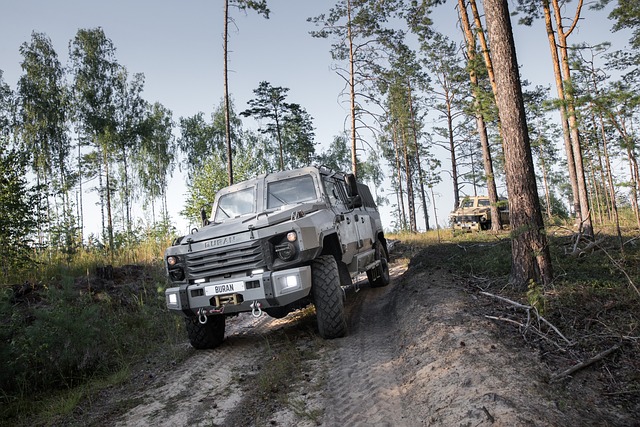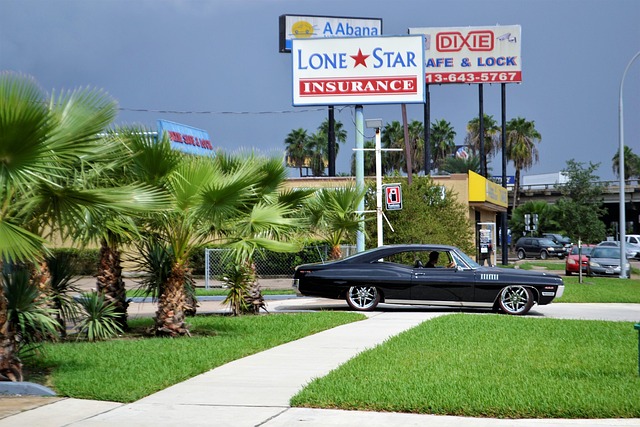RGV bedliners revolutionize axle assembly care, protecting vital components from damage and corrosion, especially in off-road vehicles. These durable liners improve efficiency, control, and longevity, reducing friction and wear. Axle assemblies, with varying designs for diverse vehicle needs, require regular maintenance. Proactive measures like visual inspections, lubrication, and alignment extend their lifespan. Future trends include lightweight materials, regenerative braking, and enhanced RGV bedliner technologies for improved performance and sustainability in the automotive industry.
Axle assemblies, the unsung heroes of vehicle motion, facilitate the connection between wheels and drivetrain, enabling smooth turning and forward progress. This article delves into the intricacies of axle assemblies, covering everything from understanding their fundamental role to exploring advanced designs and maintenance strategies. We’ll also examine RGV bedliners, which offer crucial protection and enhancement for these vital components. By the end, you’ll be equipped with knowledge to ensure your vehicle’s axles function optimally.
- Understanding Axle Assemblies: The Backbone of Vehicle Motion
- RGV Bedliners: Protecting and Enhancing Your Axles
- Types of Axle Assemblies: From Conventional to Advanced Designs
- How to Inspect and Maintain Your Axle Assemblies Regularly
- Common Issues and Troubleshooting for Long-Lasting Performance
- The Future of Axle Technology: Innovations Shaping the Industry
Understanding Axle Assemblies: The Backbone of Vehicle Motion

Axle assemblies are fundamental components in any vehicle, playing a pivotal role in translating engine power into motion. These assemblies consist of several parts, including gears, shafts, and bearings, all working in harmony to facilitate smooth and efficient vehicle movement. In off-road vehicles, such as those equipped with robust RGV bedliners, the axle assemblies must be especially durable and capable of handling challenging terrains.
Understanding how axle assemblies function is crucial for maintaining optimal vehicle performance. The backbone of a vehicle’s motion, these assemblies enable steering, acceleration, and braking. Regular maintenance and inspection of these components ensure not only the safety of drivers and passengers but also preserve the overall efficiency and longevity of the vehicle, especially in demanding environments.
RGV Bedliners: Protecting and Enhancing Your Axles

RGV Bedliners are an innovative solution for protecting and enhancing your axle assemblies. These durable, protective liners are designed to safeguard your axles from the elements, including corrosive road salt, dirt, and debris. By encapsulating the axles, RGV Bedliners prevent damage that can lead to costly repairs or replacement.
Beyond protection, RGV Bedliners offer enhanced performance benefits. The smooth, non-stick surface reduces friction, improving the overall efficiency of your axle system. This results in better control, smoother turns, and reduced wear and tear on other components. Whether you’re tackling challenging terrains or simply commuting through urban areas, RGV Bedliners provide the ultimate defense for your axles, ensuring they remain in top condition for years to come.
Types of Axle Assemblies: From Conventional to Advanced Designs

Axle assemblies come in a variety of types, each designed for specific applications and performance needs. From conventional to advanced designs, these components play a pivotal role in vehicle functionality, especially in rugged terrain or heavy-duty vehicles like those equipped with RGV bedliners. Conventional axle assemblies, often found in everyday vehicles, typically feature a simple design with fixed axles connected to the drivetrain. This traditional setup is reliable and suitable for moderate driving conditions.
However, advanced designs have emerged to meet the demands of modern vehicles and diverse driving environments. These include differential-based systems that enhance cornering capabilities by allowing individual wheels to rotate at different speeds. Such mechanisms are common in off-road vehicles and those designed for racing, ensuring better grip and control over challenging surfaces. Advanced axle assemblies may also incorporate innovative materials, like lightweight alloys, to reduce vehicle weight, thereby improving overall fuel efficiency.
How to Inspect and Maintain Your Axle Assemblies Regularly

Regular inspection and maintenance of axle assemblies are essential for ensuring optimal vehicle performance and longevity. Start by visually examining the axles for any signs of damage, corrosion, or wear. Look for cracks, uneven wear patterns, or loose components. Using a flashlight and magnifying glass can help you spot subtle issues that might be missed during a quick glance.
When it comes to maintenance, keeping your RGV bedliners in top condition is crucial. Regularly lubricate the moving parts of the axle assembly with high-quality lubricant suitable for automotive use. Ensure all components are properly aligned and secure, tightening any loose bolts or nuts. Check for proper clearance between the axles and other vehicle components to prevent rubbing or damage. Regular maintenance not only extends the life of your axles but also enhances overall vehicle safety and performance.
Common Issues and Troubleshooting for Long-Lasting Performance

Axle assemblies, like any mechanical component, can encounter issues over time that impact their performance and longevity. Common problems include wear and tear on bearings, misalignment, and damage to seals or gaskets due to exposure to elements or excessive pressure. One effective solution for enhancing the durability of axle assemblies, especially in challenging conditions, is the use of RGV bedliners. These specialized coatings provide a protective barrier against corrosion, extreme temperatures, and abrasion, ensuring the assembly maintains optimal functionality.
Troubleshooting involves identifying specific symptoms. For instance, unusual noise during operation may indicate worn bearings needing replacement. Leakage could signal damaged seals requiring repair or sealing. If the axle exhibits excessive play or misalignment, it’s crucial to check for wear patterns and make necessary adjustments. Regular maintenance, including inspection and lubrication, is key to preventing major issues. By addressing problems early and utilizing protective measures like RGV bedliners, you can extend the life of your axle assemblies, ensuring long-lasting performance even under demanding conditions.
The Future of Axle Technology: Innovations Shaping the Industry

The future of axle technology is ripe with innovation, pushing the boundaries of what’s possible in the industry. One notable trend is the integration of advanced materials like high-strength steels and lightweight composites, allowing for stronger, more efficient axles that reduce weight and fuel consumption. These developments are particularly significant for industries relying on robust vehicles, such as agriculture and construction, where durability and performance are paramount.
Furthermore, the rise of electric and autonomous vehicles is driving the need for smarter axle systems. Regenerative braking technologies, for instance, enhance energy efficiency by converting kinetic energy back into electrical energy during deceleration. This not only reduces wear on brakes but also contributes to overall vehicle range. As we move towards a more sustainable future, these innovations, including advancements in rgv bedliners designed for enhanced protection and performance, will play a pivotal role in shaping the direction of axle technology.
Axle assemblies, as discussed in this article, are vital components that enable a vehicle’s motion and steering. Understanding their functionality, regular inspection, and proper maintenance, aided by innovative technologies like RGV bedliners, is crucial for ensuring optimal performance and longevity. By staying informed about the different types of axle assemblies and addressing common issues promptly, vehicle owners can navigate both current and future advancements in axle technology, contributing to safer, more efficient driving experiences.
